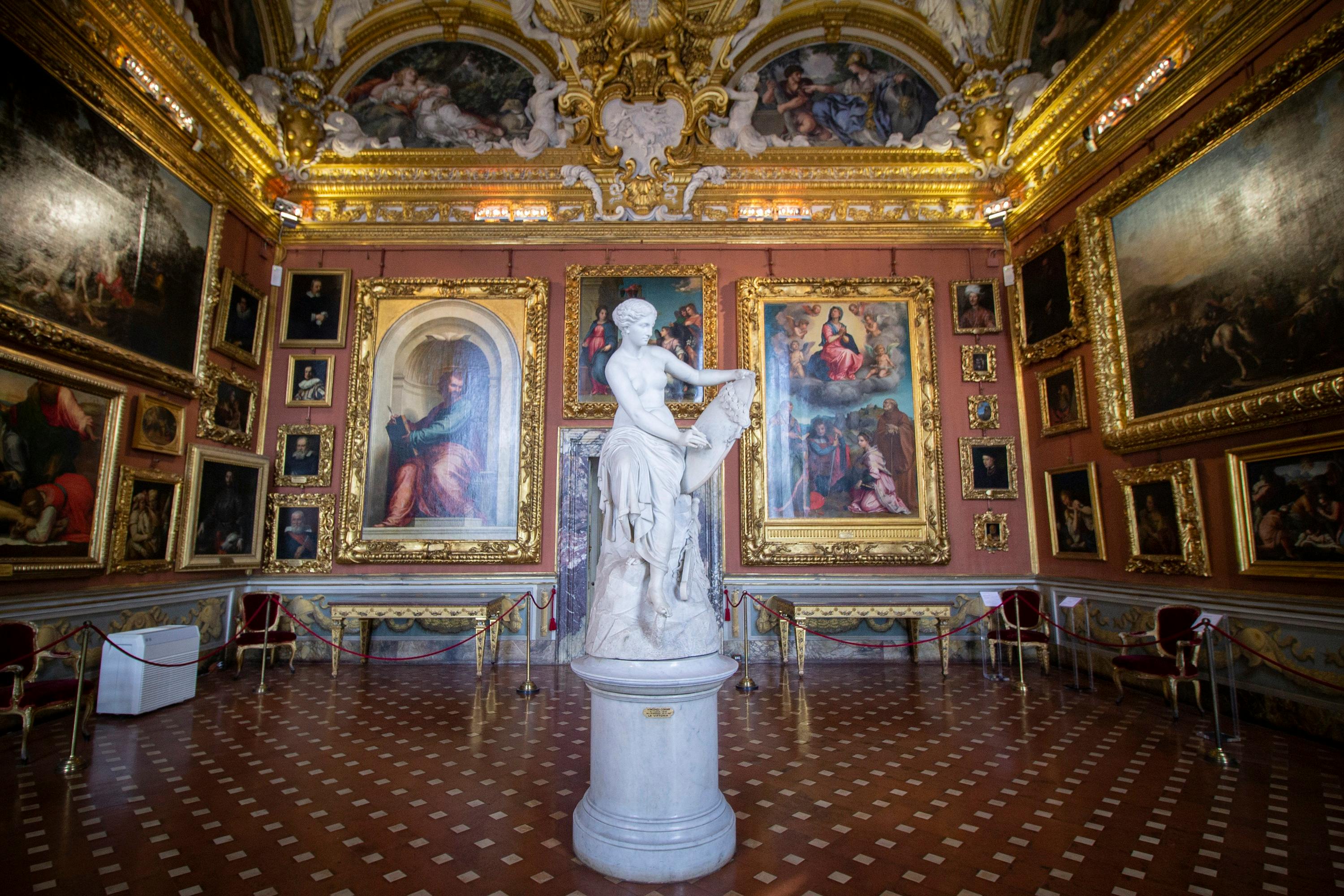Victory
Vincenzo Consani (Lucca, 1818 - Florence, 1887)
“CONSANI IN 1867”
This Victory is represented as the traditional female figure seated on a rock, but contrary to iconographic custom, she is without wings: a solution that modernises the ancient version of which the Nike of Samothrace is the most famous example. In addition to the shield, the goddess has other attributes that are peculiar to her: the sword sheathed in its scabbard and entwined with a triumphal crown made of laurel leaves, a sober cloak that covers her from the waist down to her ankles, leaving her feet visible, while her hair is elaborately gathered.
The gesture of Victory, busy writing on the shield, is symbolic, but at the same time, topical in its patriotic message. With this work, Consani, whose beginnings date back some thirty years, pays homage to the efforts of King Victor Emmanuel II in the unification of Italy. The sculptor, in 1848 militant as a volunteer in the Tuscan Battalion and aroused with enthusiasm for the successes achieved during the second war of independence in Lombardy-Venetia (1859), worked for four years on the sculpture (which was to be offered in the name of the Tuscan municipalities to the king) with the support of Paolo Sinibaldi, mayor of Lucca. Completed in 1867, the work was immediately placed in the Hall of Jupiter, used in the Medici era as a throne room where the statue still dialogues with the 17th century frescoes painted by Pietro da Cortona for Ferdinando II de’ Medici.
Consani takes classical Greek statuary as a reference model, in particular the Winged Victory found in 1823 at the Temple of Vespasian and currently in the Archaeological Museum of Brescia. The Tuscan sculptor presumably saw the illustration in the magazine “Gazette des Beaux-Arts”. Although Consani’s work was in fact a harbinger of a pro-unification message, Emperor Franz Joseph of Habsburg admired its execution when he saw it exhibited in Vienna in 1873, on the occasion of the World’s Fair, and asked to meet the artist.
